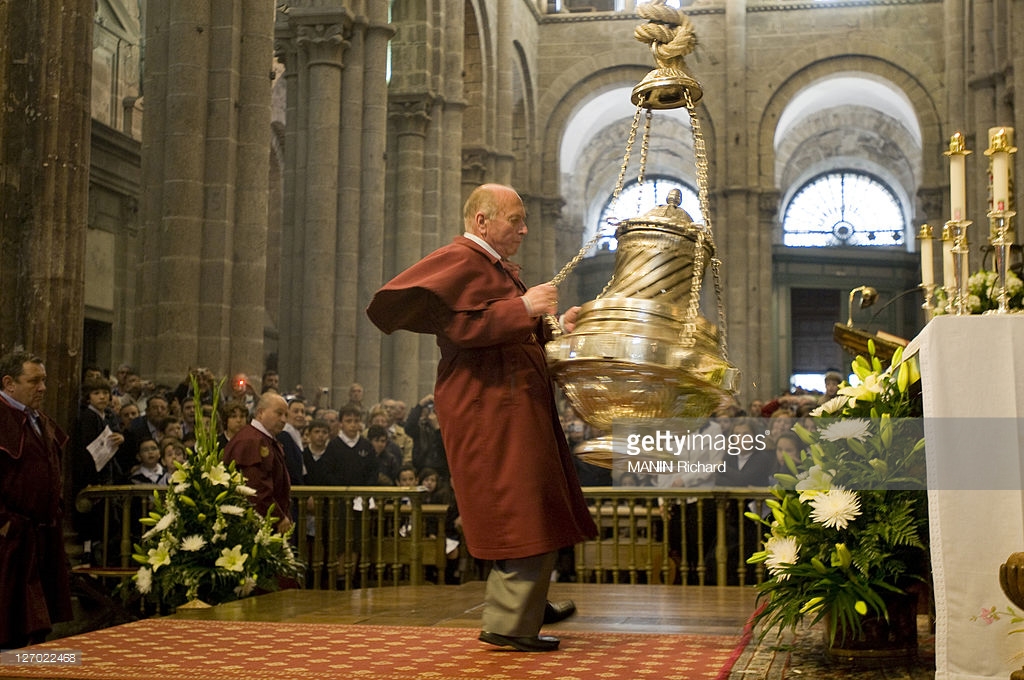
The Botafumeiro is a famous thurible found in the Santiago de Compostela Cathedral. In the past, similar devices were used in large churches in Galicia; one is still used in the Tui Cathedral. Incense is burned in this swinging metal container, or “censer”. The name “Botafumeiro” means “smoke expeller” in Galician.
The Camino de Santiago known in English as the Way of Saint James is a network of routes and pathways for pilgrims to the shrine of the apostle Saint James the Great in the cathedral of Santiago de Compostela in Galicia in northwestern Spain, where the remains of the saint are buried.
The Way of St. James was one of the most important Christian pilgrimages during the Middle Ages, together with those to Rome and Jerusalem. Canterbury (which had the shrine of St. Thomas Becket) was the fourth most popular pilgrimage.
Legend holds that St. James’s remains were carried by boat from Jerusalem to northern Spain, where he was buried in what is now the city of Santiago de Compostela. (The name Santiago is the local Galician evolution of Latin Sancti Iacobi, “Saint James”.)
During the Middle Ages, the route was highly travelled. However, the Black Death, the Protestant Reformation, and political unrest in 16th century Europe led to its decline. By the 1980s, only a few hundred pilgrims per year registered in the pilgrim’s office in Santiago. However, since the 1980s the route has attracted a growing number of modern-day international pilgrims.
Today, hundreds of thousands (over 200,000 in 2014) of Christian pilgrims and many others set out each year from their front doorsteps or from popular starting points across Europe, to make their way to Santiago de Compostela. Most travel by foot, some by bicycle, and some travel as some of their medieval counterparts did, on horseback or by donkey (for example, the British author and humorist Tim Moore). In addition to those undertaking a religious pilgrimage, many are hikers who walk the route for other reasons: travel, sport, or simply the challenge of weeks of walking in a foreign land. Also, many consider the experience a spiritual adventure to remove themselves from the bustle of modern life. It serves as a retreat for many modern “pilgrims”.
There is a famous church in Prague also dedicated to St. James.
